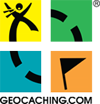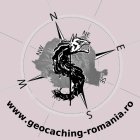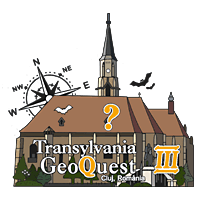
Cluj-Napoca - "the treasure city" in the heart of Transylvania

The city of Cluj Napoca is located in the north-western part of Romania and is seen by many as the unofficial capital of the historical province of Transylvania. It is the fourth most populated city in our country and the seat of Cluj County. Geographically, it is located roughly at the same distance from Bucharest (441 km / 276 mi), Budapest (409 km / 256 mi) and Belgrade (465 km / 291 mi).
The name of the city is believed to derive from the latin clus, which means "enclosed", here reffering to the city being surrounded by hills. The term was used for the first time in the 12th century to describe the medieval fortress of the city. Other frequently used names are the Hungarian Kolozsvár and the German Klausenburg.
The historical region Dacia was conquered by the romans under Trajan between 101 and 106 AD and the settlement Napoca, established thereafter, is first recorded on a milestone discovered in 1758. In the 2nd century AD, Napoca gained the status of colonia and was named Colonia Aurelia Napoca. It became a provincial capital of Dacia Porolissensis and thus the seat of a procurator. The colonia was abandoned in 274 AD by the Roman administration.
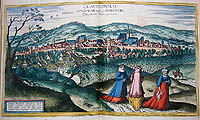 The
Middle Ages are marked by the invasions of the Hungarians, but the precise
date of the conquest of Transylvania (which was annexed by the Kingdom
of Hungary) is not known. The first reliable mention of the settlement
dates back to 1275, and to a document of the Hungarian King Ladislaus
the 4th. In 1316 Cluj was granted the status of a city, as a reward
for the Saxons' contribution to the defeat of the rebellious Transylvanian
voivode. To celebrate the event, the building of Saint Michael Church
was started. Cluj became a free royal city in 1405. By this time the
number of Saxon and Hungarian inhabitants was equal, and King Matthias
Corvinus (born in Klausenburg in 1440) ordered the office of chief judge
to be held in turns by Hungarians and Saxons.
The
Middle Ages are marked by the invasions of the Hungarians, but the precise
date of the conquest of Transylvania (which was annexed by the Kingdom
of Hungary) is not known. The first reliable mention of the settlement
dates back to 1275, and to a document of the Hungarian King Ladislaus
the 4th. In 1316 Cluj was granted the status of a city, as a reward
for the Saxons' contribution to the defeat of the rebellious Transylvanian
voivode. To celebrate the event, the building of Saint Michael Church
was started. Cluj became a free royal city in 1405. By this time the
number of Saxon and Hungarian inhabitants was equal, and King Matthias
Corvinus (born in Klausenburg in 1440) ordered the office of chief judge
to be held in turns by Hungarians and Saxons.
Over time, conflicts between different ethnic groups grew, amplified by the arrival of the Habsburgs and the Austrians. With the Treaty of Karlowitz in 1699, Klausenburg became part of the Habsburg Monarchy. In 1776, the Austrian Empress Maria Theresa founded a German university in Cluj. The establishment did not survive for long, as Emperor Joseph the 1st replaced it with the famous Piarist Highschool, where teaching was done in Latin.
 As
the political influence of other ethnic groups grew, the Romanians were
deeply indignant with the fact that they had very few rights in spite
of them being numerous. Their first attempt at being credited a nation
was made in 1791, when a group of Romanian intellectuals (who were part
of the cultural movement known as "the Transylvanian School")
drew up a petition, (the "Supplex Libellus Valachorum") and
sent it to the Emperor in Vienna. The petition demanded equality between
the Romanias living in Transylvania and the other nations (Saxon and
Hungarian), but it was rejected by the Cluj Diet. The representatives
of the Transylvanian School gave historical and philological arguments
to the fact that the Romanians from Transylvania were direct descendants
of the roman colonists in Dacia. The key figures of this cutural movement
were Petru Maior, Gheorghe Sincai and Samuil Micu. Other achievements
of that time were the introduction of Latin writing instead of Cyrillic
(as the Romanian language derives directly from Latin) and the printing
the first four languages dictionary.
As
the political influence of other ethnic groups grew, the Romanians were
deeply indignant with the fact that they had very few rights in spite
of them being numerous. Their first attempt at being credited a nation
was made in 1791, when a group of Romanian intellectuals (who were part
of the cultural movement known as "the Transylvanian School")
drew up a petition, (the "Supplex Libellus Valachorum") and
sent it to the Emperor in Vienna. The petition demanded equality between
the Romanias living in Transylvania and the other nations (Saxon and
Hungarian), but it was rejected by the Cluj Diet. The representatives
of the Transylvanian School gave historical and philological arguments
to the fact that the Romanians from Transylvania were direct descendants
of the roman colonists in Dacia. The key figures of this cutural movement
were Petru Maior, Gheorghe Sincai and Samuil Micu. Other achievements
of that time were the introduction of Latin writing instead of Cyrillic
(as the Romanian language derives directly from Latin) and the printing
the first four languages dictionary.
The European upheavals of 1848 engulfed Transylvania as well. Romanians, Hungarians and Austrians alike revolted against the decision of the Diet of Cluj to annex Transylvania to Hungary. In order to fight the Hungarian armies, a group of Romanian volunteers took refuge in the Apuseni Mountains and named Avram Iancu their leader. The group succesfully won two battles against the Hungarians, at Marisel and at Abrud. After the Austro-Hungarian Compromise of 1867, Klausenburg and all of Transylvania were integrated again into the Kingdom of Hungary. During this time, Kolozsvár was among the largest and most important cities of the kingdom and was the seat of Kolozs County.
During the First World War, Cluj became a center of revolutionary activities. As the war came to an end, on the 1st of December 1918, thirty nine delegates were elected from Cluj to attend the "Proclamation of Union" of Alba-Iulia which ratified the joining between Transylvania and the Kingdom of Romania.
However the year 1940 brought the Second Vienna Award and the loss of Cluj along with the rest of Northern Transylvania to Hungary, as it was imposed by Nazi Germany and Fascist Italy. The Germans forced large-scale anti-semitic measures in the city, as the headquarters of the local Gestapo was located in the New York Hotel (today known as Continental Hotel). On October 11, 1944 the city of Cluj was captured by Romanian and Soviet troops and it's restoration to the Kingdom of Romania was formally sealed in 1947 by the Treaty of Paris.
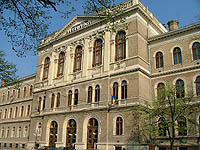 Protests
in the following years provided Romanian authorities with a pretext
to speed up the process of "unification" of the local Babes
(Romanian) and Bolyai (Hungarian) universities. The "Babes-Bolyai"
University was named after two prominent scientists from Transylvania,
Romanian bacteriology scientist Victor Babes and Hungarian mathematician
János Bolyai. This university is now the most diversified (in terms
of college specializations) and the most complex higher education institution
in Romania.
Protests
in the following years provided Romanian authorities with a pretext
to speed up the process of "unification" of the local Babes
(Romanian) and Bolyai (Hungarian) universities. The "Babes-Bolyai"
University was named after two prominent scientists from Transylvania,
Romanian bacteriology scientist Victor Babes and Hungarian mathematician
János Bolyai. This university is now the most diversified (in terms
of college specializations) and the most complex higher education institution
in Romania.
Other universities in modern Cluj are the Technical University of Cluj-Napoca (the second largest university in the city), the Art and Design University (founded in 1925, as the Fine Arts School of Cluj), the "Gheorghe Dima" Music Academy" (founded in 1919; has various sections, including musicology, musical pedagogy, canto and opera), the University of Agricultural Sciences and Veterinary Medicine and the "Iuliu Hatieganu" University of Medicine and Pharmacy.
The medical sector in Cluj is well represented by specialized clinics, various medical institutes and hospitals. One important aspect worth mentioning is "the Virtual Cube" owned by the Faculty of Psychology and used to treat phobia and other psychological disorders. Only 10 such devices exist in the entire world.
The city of Cluj is also an important center for the scientific elites. Many institutes that are part of the Romanian Academy function here: the Folklore Archive of the Romanian Academy, the "Sextil Puscariu" Institute of Linguistic and Literary History, the "G. Baritiu" Institute of History, the Art History and Archeology Institute, the "Tiberiu Popoviciu" Institute of Numerical Analysis , the Center for Transylvanian Studies, the "Emil Racovita" Institute of Speleology, the Institute of Geography and the Astronomical Observatory. Other research and development institutes are the "Raluca Ripan" Institute for Research in Chemistry, the National Institute for Research and Development of Isotopic and Molecular Technologies, the National Research-Development for Biological Sciences Institute, the Cognitive and Neuronal Research Center and many others.
Walking the streets of the city one cannot miss the greatly diversified architecture, primarily Renaissance, Baroque and Gothic. The modern age produced some remarkable buildings as well. The Communist era introduced a series of changes in the architectural style of the city, mainly because of the construction of both apartment houses in the new residential districts (Iris, Gheorgheni etc) and industrial platforms. Another structure built during this time is the Hungarian State Opera House. Inaugurated on 17 December 1948, on the site of an old summer theater the edifice hosts the Hungarian Theater as well. After 2000, the city has seen significant growth in the number of contemporary structures such as skyscrapers and office buildings.
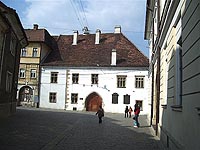 The
oldest residence in Cluj-Napoca is the House of Matthias Corvinus, originally
a Gothic structure that now bears Transylvanian Renaissance elements
due to later renovations. Changes such as these can be seen on all residences
belonging to Hungarians and albeit the late medieval houses have been
considerably altered, the street facades of the old town are mostly
preserved. The noble families built houses and even palaces in the old
town. The Baroque Bánffy Palace (1774 - 1785) was built around a rectangular
yard. Its uniqueness resides in its facade. Another landmark of Cluj
is the Palace of Justice, part of a development (located in Avram Iancu
Square) that also includes the "Lucian Blaga" National Theatre
and the Romanian Opera, the Romanian Railways Palace, the Prefecture
Palace, the Finances Palace and the Orthodox Metropolis Palace. Avram
Iancu Square is connected to Unirii Square by three streets. One of
them, the Iuliu Maniu street, built in the 19th century, presents symmetrical
buildings on both its sides wherefore it is commonly known as "the
mirror street".
The
oldest residence in Cluj-Napoca is the House of Matthias Corvinus, originally
a Gothic structure that now bears Transylvanian Renaissance elements
due to later renovations. Changes such as these can be seen on all residences
belonging to Hungarians and albeit the late medieval houses have been
considerably altered, the street facades of the old town are mostly
preserved. The noble families built houses and even palaces in the old
town. The Baroque Bánffy Palace (1774 - 1785) was built around a rectangular
yard. Its uniqueness resides in its facade. Another landmark of Cluj
is the Palace of Justice, part of a development (located in Avram Iancu
Square) that also includes the "Lucian Blaga" National Theatre
and the Romanian Opera, the Romanian Railways Palace, the Prefecture
Palace, the Finances Palace and the Orthodox Metropolis Palace. Avram
Iancu Square is connected to Unirii Square by three streets. One of
them, the Iuliu Maniu street, built in the 19th century, presents symmetrical
buildings on both its sides wherefore it is commonly known as "the
mirror street".
The beautiful architecture of the city is enriched
by the presence of many churches. Dating back to the 14th century, St.
Michael`s Church is the oldest and most representative Gothic-style
building in the country. Its oldest section is the altar (1390), while
its newest is the clock tower, built in neo-Gothic style (1860). Many
other churches were built for different religious orders (Lutherans,
Unitarians and the Orthodox Church) in Baroque style: The Bob Church
- the oldest Romanian church in the city, the Evangelic-Lutheran Synod
Presbyterian Church - has Baroque and of the Neo-classical elements
and its walls incorporate the bricks of the so-called Round Bastion,
the Franciscan Church,  the
Orthodox Cathedral in Avram Iancu Square, the Protestant Church near
the Tailors Bastion - one of the most valued Gothic structure in Transylvania,
the Synagogue - built in Moresque, also known as The Memorial Temple
of the Deported Jews and the Calvaria Church (built in the former village
of Manastur, now a district of Cluj-Napoca) - a small Benedictine abbey
still surrounded by the ruins of the old fortifications.
the
Orthodox Cathedral in Avram Iancu Square, the Protestant Church near
the Tailors Bastion - one of the most valued Gothic structure in Transylvania,
the Synagogue - built in Moresque, also known as The Memorial Temple
of the Deported Jews and the Calvaria Church (built in the former village
of Manastur, now a district of Cluj-Napoca) - a small Benedictine abbey
still surrounded by the ruins of the old fortifications.
In the midst of the bustling city life, there are only a handful of
places left where one can admire the medieval citadel. The Shoemakers
Bastion, the Locksmiths Tower and the Tailors Bastion, are the only
parts of the fortress that are still preserved today. Baba Novac, a
famous general in the army of Michael the Brave, was impaled near the
Tailors Bastion which only added to the place's notoriety.
The city welcomes foreigners in search of both cultural and scientific
experiences. There are numerous museums (The Museum of Arts, The Museum
of Pharmacy, The Ethnological Museum, The Museum of Zoology, The Museum
of Paleonthology) and the must-see 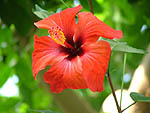 "Alexandru
Borza" Botanical Garden. This is one of the most beautiful botanical
gardens in Europe and houses over 10,000 species of plants, many of
which are rare or specific to this region. The city is also host to
a number of cultural institutes such as the Center of Japanese Art and
Culture, the Italian, German and French Cultural Centers, the British
Council, the "J.F. Kennedy" American Cultural Center etc.
"Alexandru
Borza" Botanical Garden. This is one of the most beautiful botanical
gardens in Europe and houses over 10,000 species of plants, many of
which are rare or specific to this region. The city is also host to
a number of cultural institutes such as the Center of Japanese Art and
Culture, the Italian, German and French Cultural Centers, the British
Council, the "J.F. Kennedy" American Cultural Center etc.
A particular aspect of the city is the fact that it is surrounded by hills and forests. The most popular hill is Feleac, which offers a great view over the city at night. The most visited forests are Faget (beech is the predominant species), Hoia and Baciu. Among these, Hoia forest holds an unusual attraction, due to paranormal activities that are often mentioned to happen here.
Every year the city hosts some of the most popular festivals in Romania. The best known is the Transylvania International Film Festival (or TIFF), which is being held every year since 2001 and organised by the Association for Romanian Film Promotion. It is the first Romanian film festival for international features. Other festivals take place all year long, though more frequently durring summer. "Sarbatoarea Muzicii" (Fête de la Musique) is a music festival taking place yearly on 21 June, organised under the aegis of the French Cultural Centre. In September, the Transilvania Philarmonic hosts the Toamna Muzicala Clujeana Classical Music Festival. There are also annual Jazz and Blues festivals.
 Cluj
is also an interesting city due to its geographical position, that allows
tourists to visit many attractive places. There are various landscapes
and as sanctuaries. 30 km from Cluj is Turda Salt mine a halotherapy
center and a popular tourist attraction. There are also protected areas
like the Turda Gorge, Tureni Gorge, the "Fânatele Clujului"
reservation and Pike Lake near Gherla city (40 km from Cluj). Last but
not least are the accumulation lakes Fântânele, Tarnita and Floroiu
and the saline lakes Turda and Cojocna.
Cluj
is also an interesting city due to its geographical position, that allows
tourists to visit many attractive places. There are various landscapes
and as sanctuaries. 30 km from Cluj is Turda Salt mine a halotherapy
center and a popular tourist attraction. There are also protected areas
like the Turda Gorge, Tureni Gorge, the "Fânatele Clujului"
reservation and Pike Lake near Gherla city (40 km from Cluj). Last but
not least are the accumulation lakes Fântânele, Tarnita and Floroiu
and the saline lakes Turda and Cojocna.
The various aspects of culture, science, history, nature come together to create a jewel, a true marvel of a city. Even though over the centuries, the citizens of Cluj spoke different languages in the end they came to accept and respect themselves and the values of their city which embraced many nationalities, religions and social classes alike. This mixture gave birth to one of a kind hospitality that the people of Cluj are renowned for.. Tourists come to Cluj Napoca as foreigners but depart with an aching heart, looking forward to returning.
 Română
Română English
English
